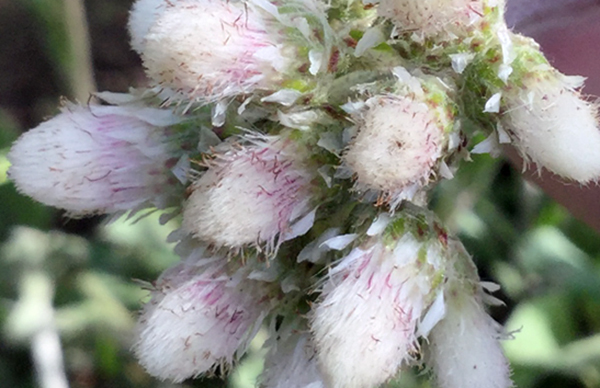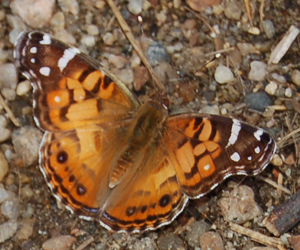The Wrack
The Wrack is the Wells Reserve blog, our collective logbook on the web.
The Wrack is the Wells Reserve blog, our collective logbook on the web.
Now is the heyday for woodland wildflowers; trillium and foamflower are in bloom and lady slippers are just peeking out from under their calyces.

Often missed at this time of year is the playful display of Antennaria plantaginifolia, commonly known as "pussy toes," named for its bloom of fuzzy, silvery-gray flowers that resemble cat’s feet. Pussy toes are in bloom now in the native plant border and on the divider in the parking lot. This low-growing, native perennial wildflower has few needs and tolerates full sun or part shade, dry conditions, and poor soil. What more could a gardener ask?
Antennaria comes from the Greek word for antenna, referring to the tufts of hairs that resemble the antennae of insects. Those tufts let the wind disperse the seeds far and wide. Plantaginifolia refers to the basal leaves that resemble plantain.

Antennaria plantaginifolia and pearly everlasting (Anaphalis margaritacia), which blooms in late season, are hosts for the American lady butterfly. Ladies were visiting pussy toes in the garden in mid May and soon the eggs they laid will hatch and caterpillars will begin feeding on the leaves. Some think that pussy toes look unsightly as caterpillars progress through their life cycle, but we must redefine beauty! We enjoy watching our guests eat a meal we've lovingly nurtured and sleeping in beds we’ve prepared. We take delight in seeing the caterpillars curl into chrysalises to metamorphose.
The American lady is a migrating butterfly, spending winter in the southern United States. They may not match the monarchs, but they fly a hefty marathon for such a small butterfly. The least we can do is give them a snack.